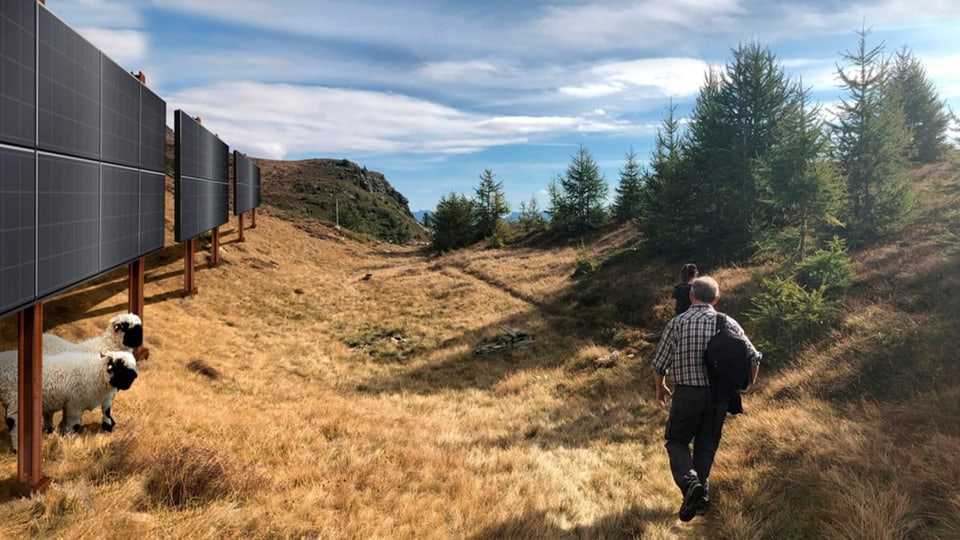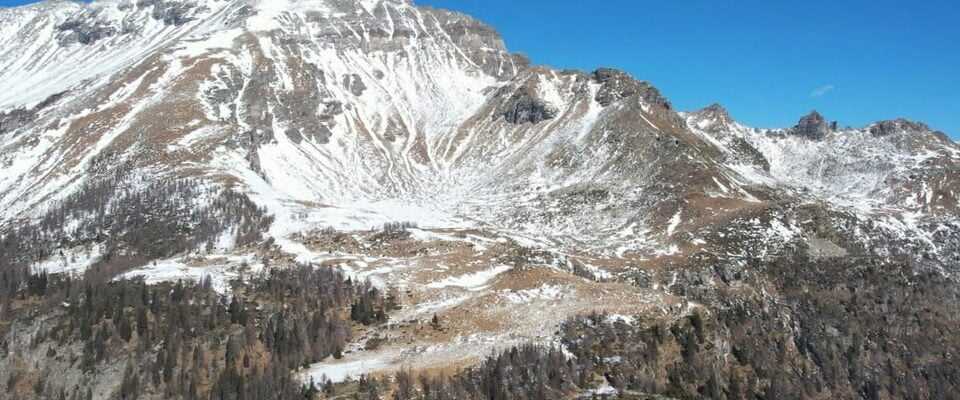contents
Energy companies are planning a huge photovoltaic system in the Valais mountains. Landscape conservationists are up in arms.
A high-Alpine solar power plant covering an area the size of nine football pitches: the energy company Alpiq wants to build the largest photovoltaic system in Switzerland under the project name “Gondosolar” – in the middle of the Simplon region. If initiator and plot owner Renato Jordan has his way, energy for 5,200 households is to be produced on the “Alpjerung” at 2,000 meters above sea level high above Gondo (VS).
Legend:
On this alp high above Gondo, over 30,000 solar panels will one day produce electricity for 5,200 households.
srf
“The sun shines here all day. There’s no other mountain anywhere. Not even in winter. We always have optimal sunshine here,” says Jordan on a sightseeing tour, while directing the helicopter pilot over the site.
We always have optimal sunshine here. Even in winter.
A special feature of the solar power plant: it is supposed to deliver 55 percent of the production in winter – four times as much as a comparable plant in the Mittelland. In addition, the snow should reflect the sun and irradiate the panels on the back, which also increases the performance.
Alpiq representative Amédée Murisier spoke at a media conference in Brig on Monday about a “flagship project, especially with regard to the power bottlenecks recently discussed in the winter months.”
The municipality of Gondo-Zwischbergen is also on board. Mayor Daniel Sqaratti is convinced that photovoltaics and hydropower complement each other perfectly. At the end of Gondo, just before the Italian border, there is already an Alpiq hydroelectric power station.
“If you have many hours of sunshine, you can use this energy and keep the water in the reservoir. As soon as the sun goes down, electricity can be produced with the water saved,” says Squaratti.

Legend:
The largest solar power plant in Switzerland is to be built high above Gondo VS.
Visualization Gondosolar
It is already clear that the project will meet with great resistance, which once again shows the dilemma of green electricity and environmental protection. Landscape conservationist Raimund Rodewald speaks of an “expansion hysteria of renewable energies”: “On untouched alpine meadows, open-space solar systems of this size are simply undesirable”.
Landscape protection goes on the barricades
Rather, one should first exploit the potential elsewhere. “Especially in the sunny canton of Valais, I’ve noticed how few solar systems there are on the roofs of thousands of holiday homes,” says Rodewald. In addition, one could cover the highways with solar panels or promote agro-photovoltaics. In fact, an attempt was started in autumn 2021 in which Raspberry plantations were covered with solar panels.
Solar systems of this size are simply undesirable on untouched alpine meadows.
Incidentally, the largest high-alpine solar system to date is in Glarnerland. Almost 5,000 photovoltaic panels on the Muttsee dam will soon be supplying electricity for around 700 households – in summer and winter. At the opening ceremony, Federal Councilor Simonetta Sommaruga called for many more such projects. According to the Energy Minister, the Swiss energy companies have been building wind turbines and photovoltaic systems, especially abroad, for too long.
The Valais landowner Renato Jordan is also convinced that he can make a contribution to the energy transition with Gondosolar. But how realistic is his dream? The complexity of the approval process is still very difficult to estimate, he says. The canton of Valais supports the project in principle.
He hopes that everything will go faster with the simplification of the approval process for renewable energies announced by Federal Councilor Sommaruga last week. “Gondosolar is not in a protected area and cannot be directly viewed from any settlement. You should be able to do something there.” If everything goes according to plan, the plant should go into operation in 2030.
